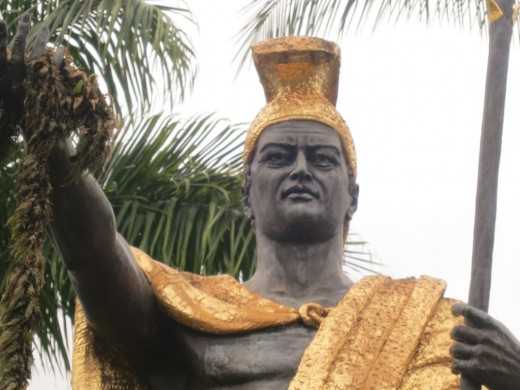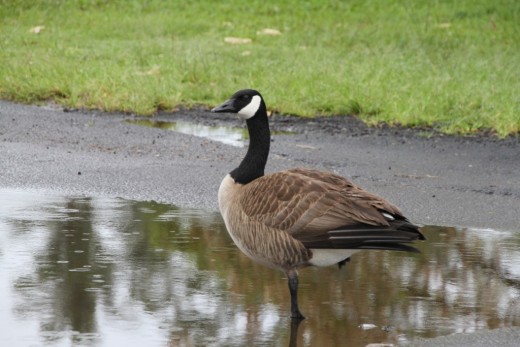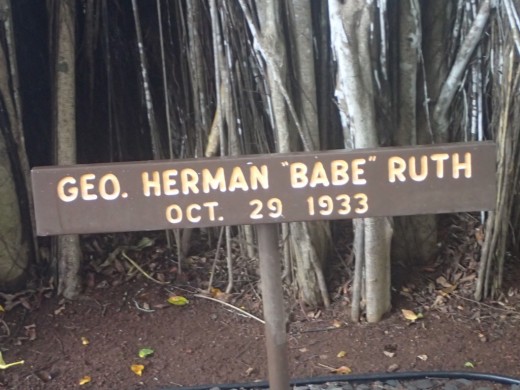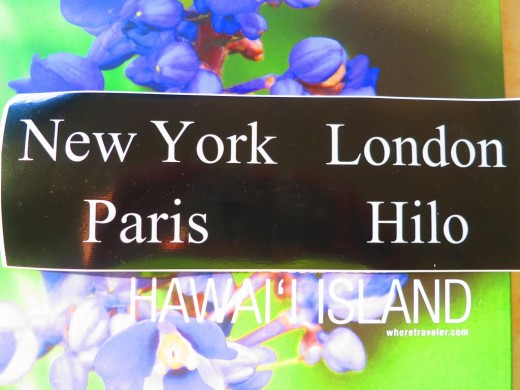Hilo is different than many other areas of Hawaii. There is an interesting downtown that has survived several Tsunamis’. ‘Tsu’ means ‘harbor’ and ‘nami’ means wave, thus Tsunami. The latest “harbor waves” had occurred in 1946 and 1960. It is only the question of “when” the next round will hit Hilo.
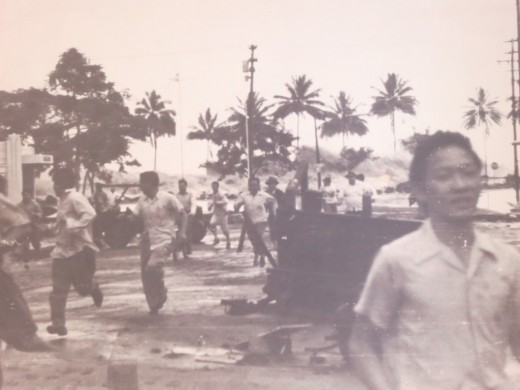
We took our nice 2015 Ford Fusion with 1400 miles past “Ken’s diner.” It was the first place we ate at in 1998. We were told by a good friend to eat there. Once was enough. Ken sold out, and ‘Debbie’ has taken over using the traditional name and recipes.

We past a row of Bayan trees on “Banyan Drive” to get to our hotel. Banyan trees have been planted for people who have visited Hilo, many of whom came in the 1930’s.
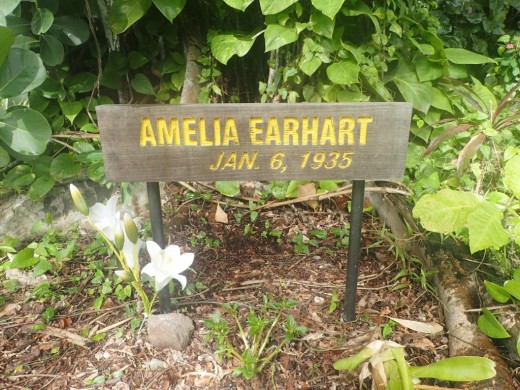
We have usually stayed at Hilo Hawaiian Resort. However, this refurbished hotel was a bit more expensive. There are no Best Western’s or Hampton Inn’s in Hilo. We settled on “Uncle Billy’s” as we were to receive a room that was “waterfront” with a continental breakfast. We always saw people having their breakfast there, and now we were going to join them.
Our room #242 was directly on the bay. We could see various canoe crews practicing in the bay and cruise ships coming and going. We could also see and hear the rain squalls that came all day and night.

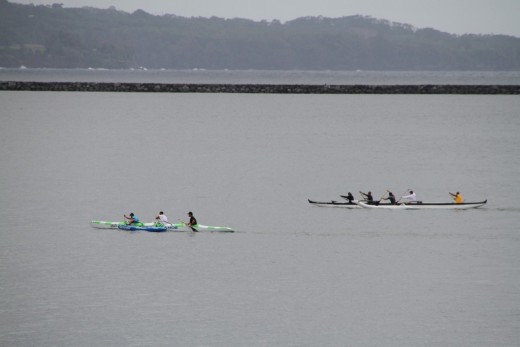

In the evening we could hear the sea flapping against the lava rocks and the frogs croaking away. It was great! You couldn’t buy a CD to reproduce these sounds.
The only problem with Uncle Billy’s hotel is that it was still in the 1960’s with metal keys, jalousie windows, a window AC. The rooms and hotel need refurbishment badly. Tiles were cracking and painting was needed everywhere. We had to notify the front desk that there was a huge puddle in the middle of the hallway. Uncle Billy is still alive living in Kona, on the “dry side,” at the age of 92.
We made fun of the hotel, but we did have several great sleeps. Listening to those sounds lullabied us to sleep.
As for breakfast, it was bread and more bread. No protein whatsoever. Kathie did enjoy the papaya. On our last day I decided to eat one, but it was a very large mango instead. I hate mangoes, which also includes beets with strong angst.
We did get to talk to Keli. She is 93, full of spit and vinegar, who takes care of the flowers in the hotel. She was a classmate with Uncle Billy. She was born in Hilo in 1922 of Japanese ancestry. She lived during the black outs of Hilo during WWII, and witnessed the two major tsunami’s that hit Hilo. Keli loves “spam and rice.” She had so many stories and she would say, “That’s another long story…”
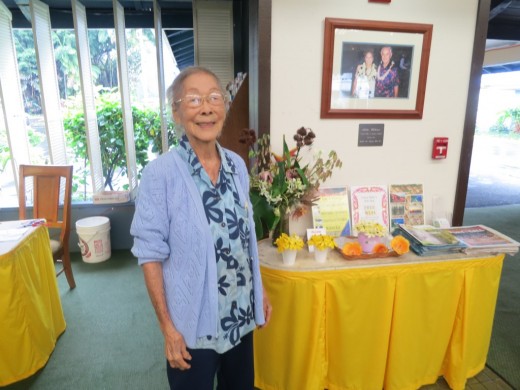
Hilo has the distinction of being the rainiest U.S. City with an average of 126 inches and upwards to 200 inches. Just think that Miami gets about 60 inches. We have always been to Hilo in the sun, until now.
Never visit downtown Hilo on a rainy Monday. The museums are closed that day. We managed to go in and out of boutique stores. On a corner, we met “Carrie” who was having a tough time closing her car door. Several days ago she was hit by an uninsured motorist. Her 79 year old grandmother was with her. No one was hurt and the Subaru was still in operation. Carrie is now going to school for Aqua Agriculture at the University of Hawaii at Hilo. She had previously lived in the Kenai Peninsula region of Alaska.
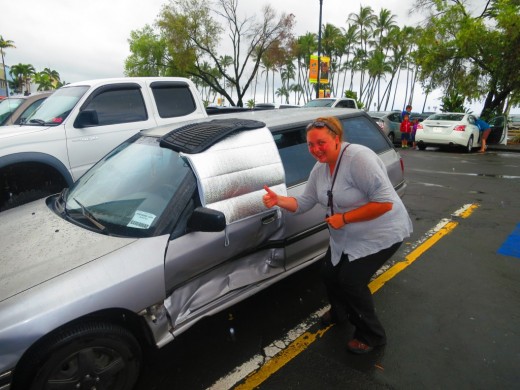
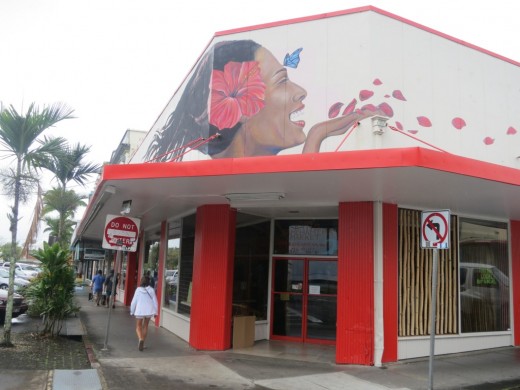
One of my all-time favorite restaurants is located in downtown Hilo, Café Pesto’s. One of the best beef stir-fry’s I ever had been there in 1998. We have gone back several times since. One of the reasons for its longevity is the owner is still there, David Palmer. They make very good pizza and the stir-fry is still delicious. I prefer the crusty tofu stir-fry these days.

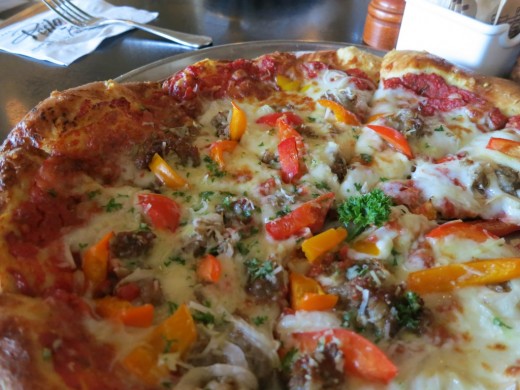
We found “Rainbow Falls” located in Hilo proper. They call it “Rainbow” when the sun hits it just right. There was no sun when we visited this time.
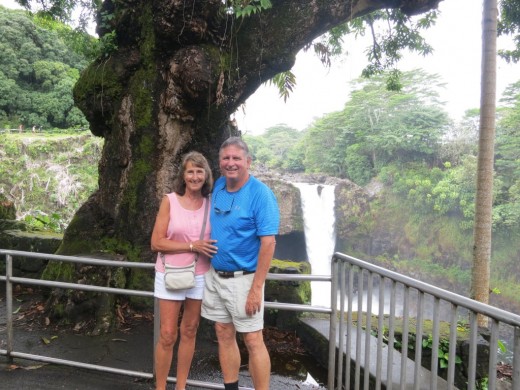
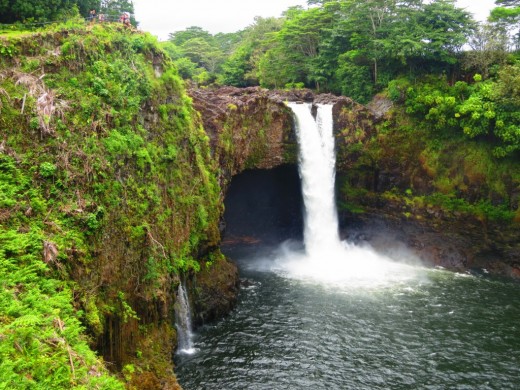
We made it to the Mauna Loa Macadamia Nut farm just south of town. They were a bit stingy on the free nuts you could have. Ironically, the bags of Macadamia nuts are cheaper at Walmart. We met a nice French couple from Paris who took our picture.
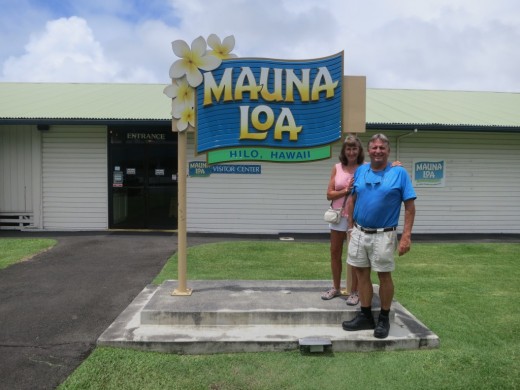
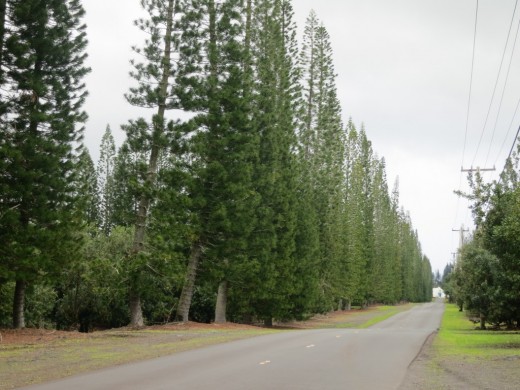
One of the main reasons you go to Hilo is to visit Volcanos National Park. It is only 29 miles away. In 2012 the Volcano House “resort” was closed. It is open now owned by a new proprietor. A caldera view room in the resort will only cost about $350/ night. There are some beautiful vistas from this “resort” and the views are free.
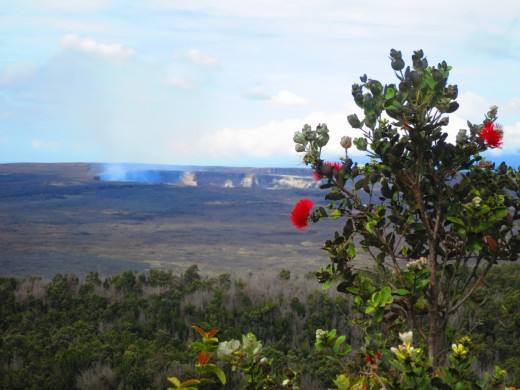
Jeffery, the young man who we purchased coffee from, said that the red flower that was blooming on trees—the Ohia Lehua Tree—is a sacred blossom “to Pele” and is “the flower of the island.” There is also a love story about this red blossom too. It sort of looks like the “bottlebrush” trees we have in Florida.
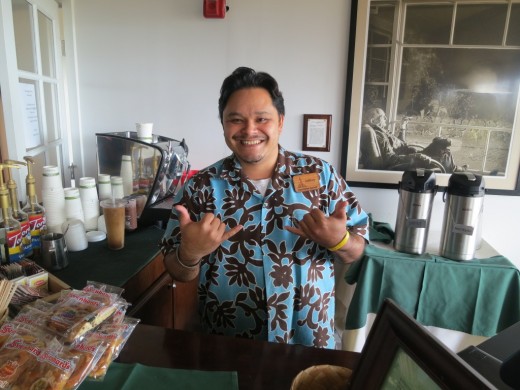
One of our favorite parts of this Volcano’s National Park is to walk through “Thurston’s Lava Tube.” This time we arrived when the ceiling was leaking quite porously. It is still fun.
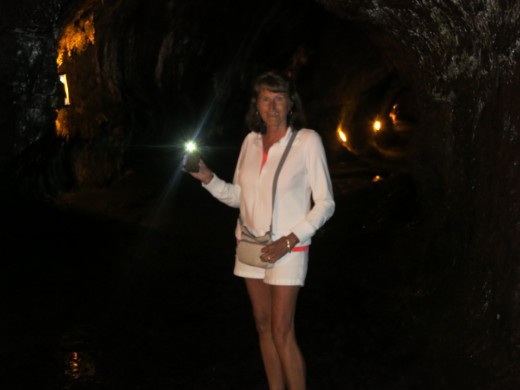
In the afternoon on a Tuesday we finally made it to Hilo’s “Pacific Tsunami Museum.” We were given an informative tour by “Delmar” who once worked at Mauna Loa Macadamia Nut farm. The museum was mainly started by a woman, Jeanne Branch Johnson, who lived through the 1960 Hilo Tsunami. She assisted in the campaign to collect personal histories of people who lived in the area during those times.
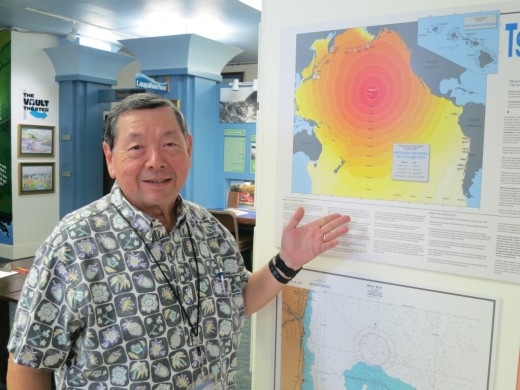
The museum was once the Hawaiian Bank in town. The vault is used today as a small movie theater.
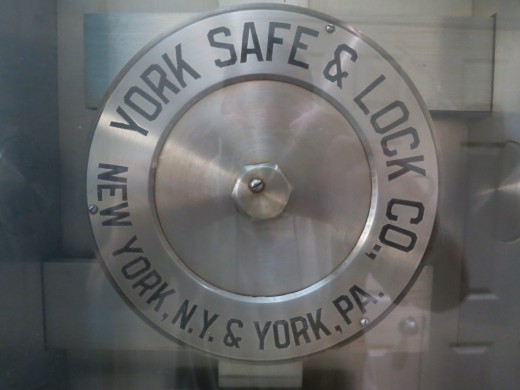
Kathie and I gained a better understanding of Hilo and awful consequences of what happens when communities are hit by “the harbor wave.”
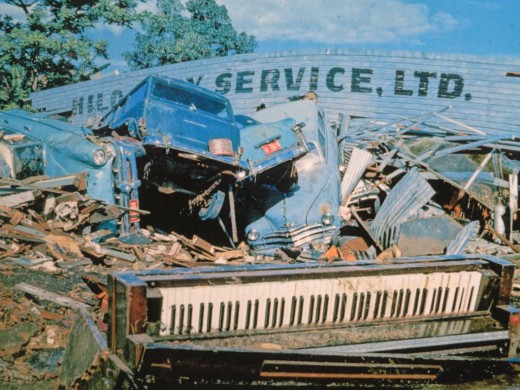
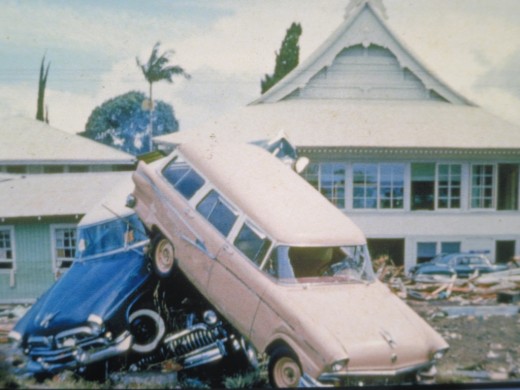
On a shortened visit to Akaka Falls, the longest falls in Hawaii, we came across a store in Honomu named “Glass from the Past”. They were selling a sticker I had to buy:
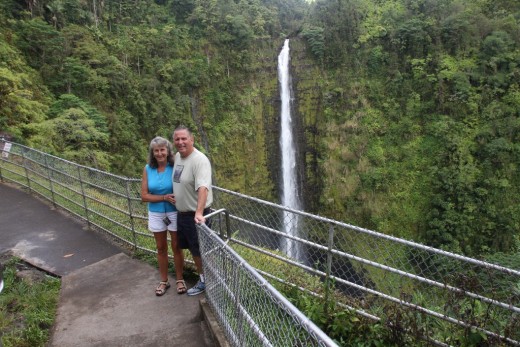
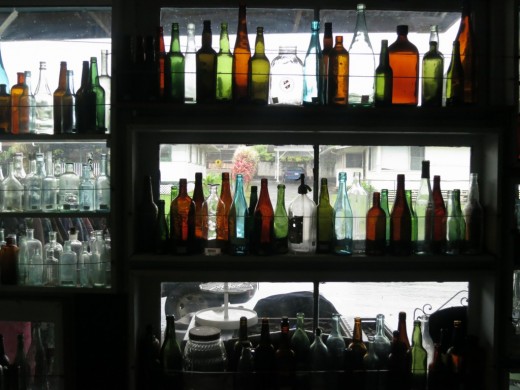
If you get tired of the rain, you always could travel over “saddle road” for fifty miles to get the dry side known as Kona. We found that Hilo has plenty of charm and very nice people. As one article I read stated it perfectly, “Hilo is a state of mind.”
We had to stop by statue of King Kamehameha the Great heading back to Uncle Billy’s. We were rewarded to find an endangered specie of a goose hanging out, the Nene. Many years ago these birds flew across 2500 miles of water and evolved into a different species.
